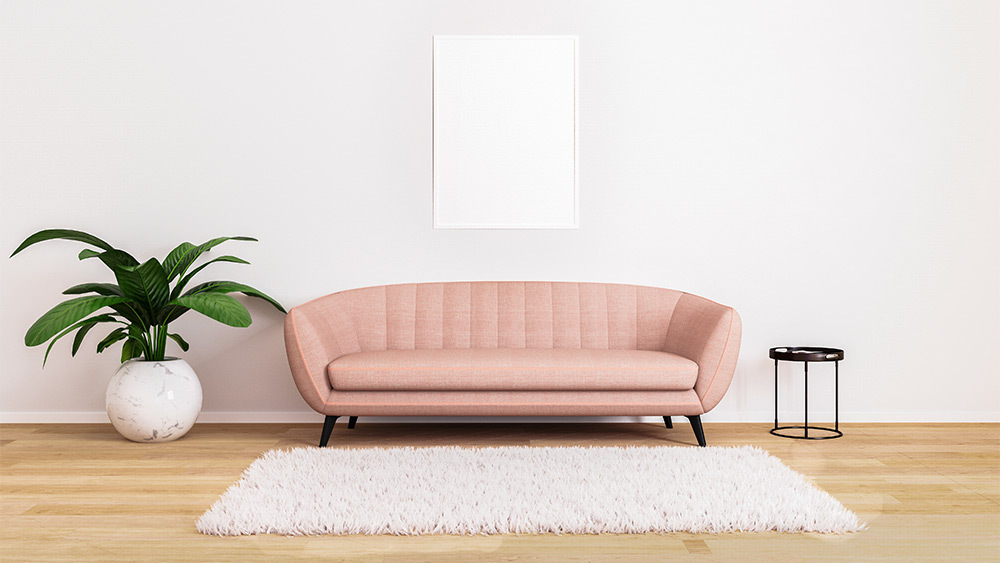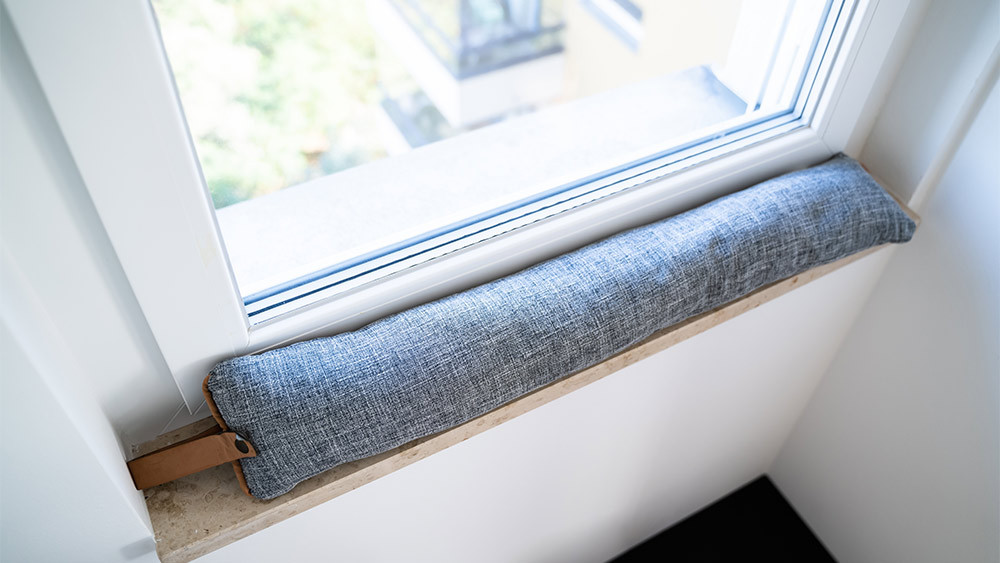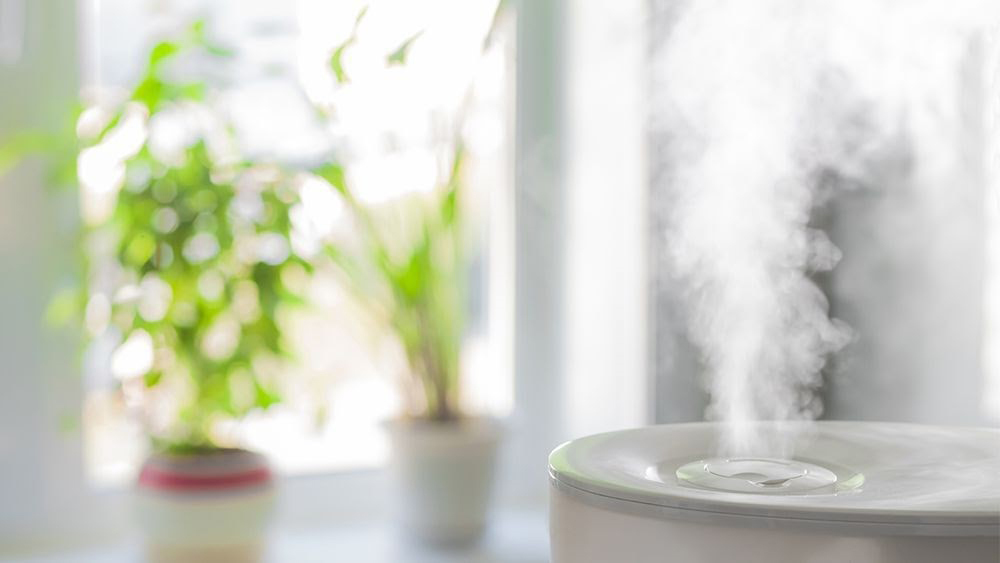With storms and lower temperatures taking over, you shift your activities indoors for warmth and comfort. But what to do if you live in an old house that lacks a proper heating system? Or you might want to reduce the use of heating units because of the high energy cost this winter as electricity has increased by 6.5%, and natural gas is up by a whopping 25%. Are you worried your HVAC unit can break down unexpectedly in the middle of a cold afternoon, making it quite challenging to survive the chilly weather?
In any case, it’s essential to learn how to warm up your room without a heater before you are caught in an emergency situation. Let’s look at 18 valuable tips to help you keep your space as toasty as possible.
1. Switch to Smart Heating

If you are looking for ways to stay warm without a heater just because of the high electricity bills, then shifting to smart heating would solve your problem.
You can use a smart thermostat or a smart AC controller that works with mini-split, window, or portable units. They allow you to remotely control your unit using your phone and maintain your ideal room temperature.
These smart devices solve all your winter woes. With next-gen features, you can make sure you are not running your heat pump unnecessarily. For example, if you forget to turn your unit off when going out, it will automatically turn off using the geofencing feature. You can set schedules to avoid running your unit all the time. Plus, you can keep track of your heat pump usage. You can see your daily, weekly, and monthly usage patterns in the mobile app. This can help you make any necessary changes to lower your electricity bill.
2. Harness the Power of Sun

One natural way to stay warm without heat is to open the curtains and blinds first thing in the morning. The bright sunlight will help warm up your room in the cold weather. The natural vitamin D from the sun rays will also help counter winter blues and lift your mood. Plus, the UV light from the sun kills most of the harmful germs and improves indoor air quality. To maximize the amount of sunlight reaching your room, trim back the tree branches and remove any other obstructions. You can close the drapes at sunset to retain the warmth accumulated during the day.
3. Use Curtains to Retain Warmth
Opening the blinds in the morning will let the natural light in which will warm up your room. At night, you would want to retain that heat as much as possible. Using curtains, blinds or shades can be highly beneficial. Thermal curtains are specially designed to trap air between the different layers of fabric, creating a barrier of hot air that provides an insulating effect. This means that the temperature outside will not impact your room temperature. The blackout shades are another option that provides insulation and helps trap in hot air. Thus, thermal curtains or shades can help keep your room warm without a heater.
4. Weatherize Your Windows
Cold drafts coming through gaps and cracks in windows can severely impact your room temperature. Insulating your windows is the best solution in frigid temperatures. You can seal all the air leaks with caulking. Next, apply weatherstripping between the window frame and sash to prevent cold air from seeping in. To increase your window’s ability to retain heat, try covering it with a window film. In the end, hang curtains or draperies to minimize further heat loss.
5. Start Cooking or Baking

Cooking or baking not only adds a nice aroma to your home but also radiates heat to the surrounding rooms. After you are done baking, turn off your oven but leave its door open. The hot air spreads in the nearby area, giving off a toasty feeling. The hot steam from boiling water or pasta can also help warm up your room without a heater.
Note: Do not turn on the stove or your oven just to heat your home. A gas appliance gives off carbon monoxide, which can be lethal.
6. Use a Hot Water Bottle
Thinking of how to stay warm without heat? Well, you can use a hot water bottle under the sheets when it’s time for bed to have a comfortable sleep. Even when you are doing some office work or reading a book, you can keep a hot water bottle with you as it will keep on radiating warmth for quite some time.
7. Utilize the Shower Steam
If it’s possible, try keeping the door open while taking a shower. This will transfer heat from the hot shower and help to warm up your room without a heater. Plus, it will also increase humidity levels, making the air less dry and more comfortable.
8. Layer Your Clothing

When you don’t have heating equipment, you can focus on keeping yourself warm by layering on clothes. Use a thermal base layer, then put on an insulating layer such as a sweatshirt or hoodie as a middle layer. You can put on clothes made of fleece, wool, or cotton as the last layer. As heat is lost through your hands and feet, slip on thick socks and add on warm mittens. Top everything off with a woolen cap.
9. Warm Up Your Bedding
Have you ever thought about blow-drying your sheets? Probably not. It’s an uncommon tip but nevertheless quite functional. The short bursts of hot air from your dryer can quickly warm up the sheets. You can do this every night before going to bed. Just make sure to remove it safely, use the equipment and unplug it after use. You can also try a bed heater that is specially created to blow air under the sheets, but it can be an expensive option. Also, invest in a good quality blanket to retain all that warmth. Go for a down – filled blanket as it traps the heat, or use an electric blanket. Make sure to follow the safety tips with electric bedding.
10. Add a Floor Rug

In addition to being used as a statement piece for your room, a floor rug can be used in winter to prevent heat loss through the floor. It can add underfoot warmth to the tile, wood, or concrete floor, providing a warmer surface to sit or walk on. When choosing an area rug for your room, consider its size and depth. A thicker and larger rug provides more protection against cold. A loosely woven rug will have more space in-between and won’t offer enough protection, so go for the one with a high stitch count.
11. Use Draft Stoppers

A draft stopper, also known as a draft blocker, is a thick material that acts as a barrier between the outside and inside. When the weather gets chilly, you can use a draft stopper at the bottom of the window frame. You can also place them under your room doors to prevent drafts due to air exchange from the outside environment. You can roll a thick towel and use it as a draft blocker, or you can buy a specially designed one; it’s totally up to you. However, a dedicated one will give your room a neat look.
12. Focus on Insulation
When it comes to heat, a surprising amount is lost through the gaps or cracks in your roof, walls, windows, and doors. However, you can minimize this loss by focusing on home insulation. Find air leaks around your room and use caulking to fill them up. You can use different types of insulation, such as spray foam insulation to fill in the wall’s cavities and foam board insulation for the floor and ceiling. Seal any openings in the exterior wall of your room with expanding foam to reduce cold air from seeping in.
13. Inspect Your Roof
Heavy snow and rain can pose damage to your roof. This results in cold air infiltrating your room through roof leaks and affecting your room temperature. Inspect your roof and check if any shingles are broken. You can repair the damaged shingles by applying roofing sealant underneath the cracks. If any shingles are missing, then you will have to start looking for a new roof.
14. Use a Humidifier

Warm air holds more moisture than cold air, so naturally, the humidity levels go down in the winter months. Having dry, cold air in your room can be uncomfortable, especially if you have allergies or asthma. A humidifier is a simple yet powerful solution. It adds moisture to the air and helps combat dry winter air in your house.
15. Seal the Air Leaks Around Electrical Outlets
Have you noticed a cold chill while plugging in your appliances? You may be unknowingly letting the drafts enter your room and affecting the room temperature. The culprit is your electrical outlets.
Use an outlet insulator – it is a foam sheet that you can place behind the outlet plate to block the drafts.
16. Reverse the Direction of Your Ceiling Fan
Most homeowners use a ceiling fan in counterclockwise rotation to create a cooling effect in summer. Similarly, you can use your ceiling fan in the winter to push down the warm air gathered around the ceiling. You will just have to switch the direction from counterclockwise to clockwise to warm up your room without a heater. Most fans come with a switch at the base that you can use to change its direction. If strategically placed, a ceiling fan can even draw in hot air from an adjacent room that has a heating source installed, keeping it warm.
17. Move Your Bed Away from Windows
Rearranging your room’s furniture to warm it up might not make sense, but there’s a logical explanation. The window glass cools down during the night, leading to cold air near the window. If your bed is right next to the window, you will feel cold, affecting your sleep. Plus, if your windows are not insulated, incoming cold drafts will further exacerbate the issue. Try shifting your bed in the opposite direction, away from the windows, to stay warm without heat.
18. DIY Your Own Heater
When you don’t have an electric or gas heating system, you can DIY your own heater to make your room warm and cozy. A simple terracotta heater can work; you just need some candles and clay work to start heating your home. If that’s not an option, you can also try an alcohol heater made with isopropyl alcohol, a metal can, and tissue rolls. Another option is a DIY solar heater that uses the sun’s natural energy to warm up your room. Creating this one will require some time and effort, so keep that in mind. Keep these heaters out of the reach of children and pets and follow all the heating safety tips.
Warming up your room without a heater can be tricky, but tips such as sealing air leaks to prevent cold drafts, letting the sun in, and using thermal curtains to retain heat can be highly beneficial. Moreover, in freezing weather, switch to smart heating to maintain comfort and save on heating costs.
Via: Cielo Wigle
Are you interested in our services? Want to know more from our specialist? Leave us your contact below and we will contact you.



